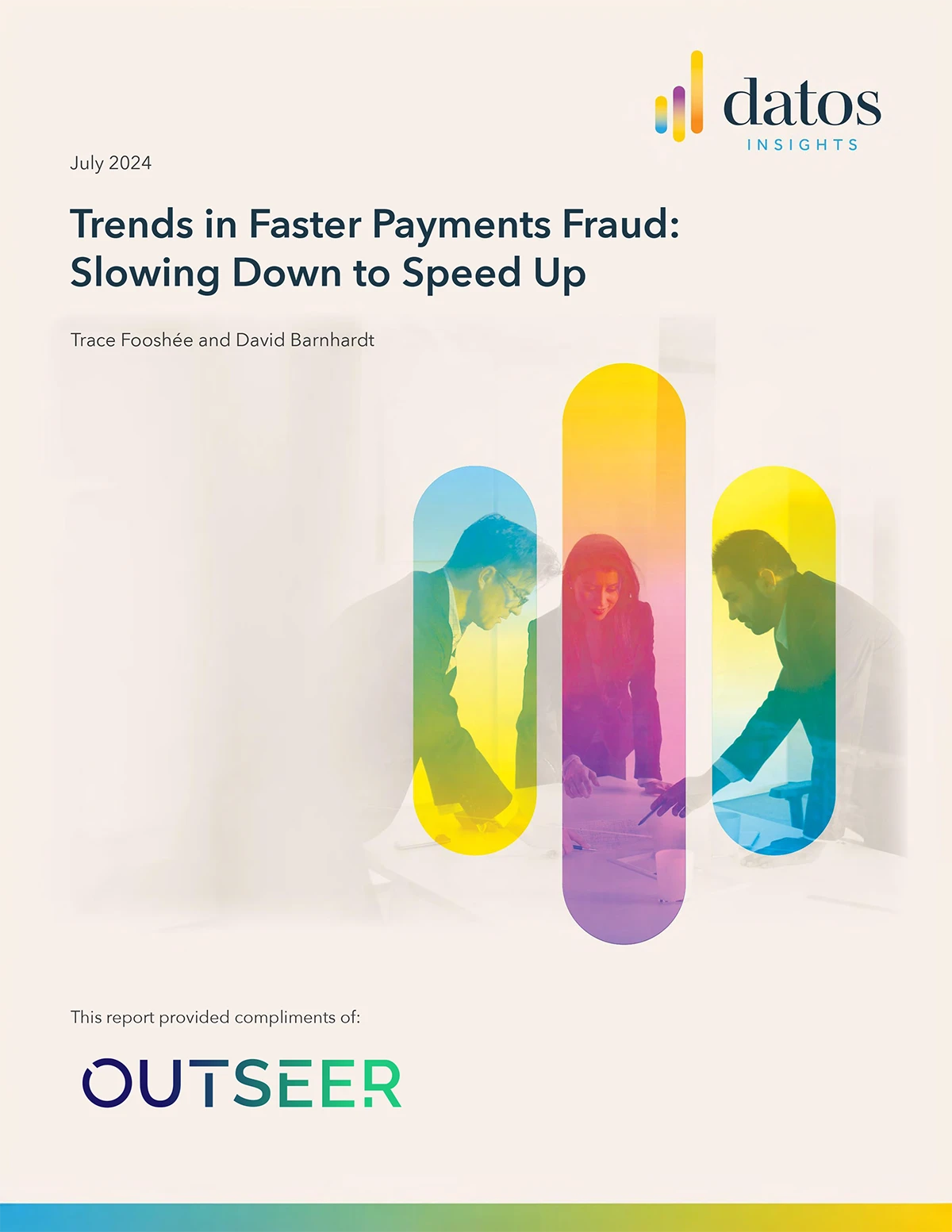Faster payments have been an important innovation in the financial services industry. Yet, the benefits of these payment systems have come with a surge in fraud attacks and losses, and fraud leaders and their stakeholders are struggling to adapt and overcome the ongoing surge in fraud. Authorized Push Payment (APP) scams have emerged as a recurring theme across markets. These scams are strongly influencing how FIs are going about the business of modernizing and improving their payment fraud control frameworks. The ability to control these scams threaten to erode the trusted relationship between an FI and its customers.
The 2024 Datos Insights research study, sponsored by Outseer, surveyed 32 fraud executives at large financial institutions (FIs) and fintech companies from Argentina, Australia, Brazil, India, the U.K., and the U.S. to examine longitudinal patterns of adoption and payment fraud trends.
The report examines the trends in growth in real-time and non-real-time payments, how those trends influence corresponding rates of growth in different fraud typologies, and how these fraud trends affect efforts among fraud leaders across different markets to modernize and respond to these challenges. It also includes analyses of these market forces, their implications, and likely outcomes in terms of forecasted patterns and anticipated responses.
The key findings from this report follow:
- Fraudsters prefer faster payment rails: Fraudsters, whether using scam attacks or account takeover (ATO) attacks, prefer to use real-time payment rails.
- Proximity to a liability shift is a potent force shaping the market for fraud controls: The pace and intensity of investment in scam controls appears, on balance, to be greater in markets that are relatively close to a regulatory minimum standard of care for reimbursing APP victims such as in the U.K. market, for example.
- Mobilization efforts have not yet reached a tipping point in most markets: Many efforts are underway to muster the resources required to mitigate scam attacks more effectively. However, there are only a handful of examples in which such efforts have reached the level of coordination and organization necessary to produce material impacts on containing or reversing trends in the rates of growth in attacks and losses.
- Consensus is building behind segments of APP controls: FIs are focusing on key areas such as orchestration, mule activity detection, inbound payment monitoring, and enhanced customer interaction in their efforts to modernize and consolidate their fraud control frameworks.
- Mule activity and inbound payment monitoring are rising priorities: There has been noticeable increase in observations of high growth rates of mule activity on real-time rails. Fraud executives are increasingly paying attention to this topic. Additionally, the importance of monitoring inbound payments for fraud is becoming a global trend, as seen in the U.K. and Brazil.
- Customer interaction and engagement are crucial in the fight against fraud: Several strategies employed by FIs to combat scams involve increased verification and questioning of the payment originator before allowing suspicious transactions. This highlights the growing partnership between banks and their customers in sending payments securely.








